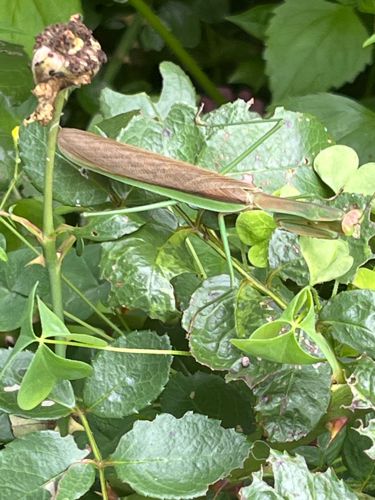Praying Mantis (likely European Mantis)
Scientific Name: Mantis religiosa (common species, difficult to confirm exact species from image alone)
Order & Family: Order: Mantodea, Family: Mantidae
Size: Typically 5 to 7.5 cm (2 to 3 inches) in length, though some species can be larger or smaller.

Natural Habitat
Found in various habitats, including gardens, meadows, forests, grasslands, and areas with dense vegetation, where they can easily find prey and camouflage themselves.
Diet & Feeding
Carnivorous, feeding primarily on other insects such as flies, crickets, butterflies, moths, and grasshoppers. Larger mantises may capture small vertebrates like lizards, frogs, birds, or rodents.
Behavior Patterns
Praying mantises are ambush predators and masters of camouflage. They typically remain motionless, blending into their surroundings, waiting for unsuspecting prey to come within striking distance. They have a characteristic 'praying' posture where their powerful forelegs are held folded, ready to snap out to grasp prey. Males are often smaller than females. During mating, sexual cannibalism by the female can occur.
Risks & Benefits
Benefits: Praying mantises are beneficial insects for gardeners and farmers as they are natural predators of many pest insects, helping to control their populations without the need for chemical pesticides. Risks: They pose no risk to humans; they are not venomous and do not bite unless provoked.
Identified on: 8/29/2025